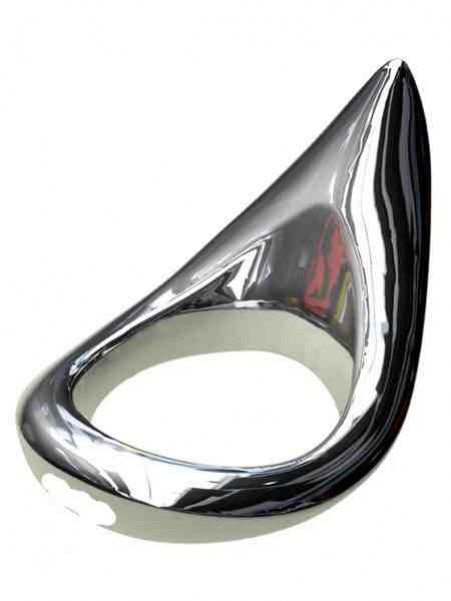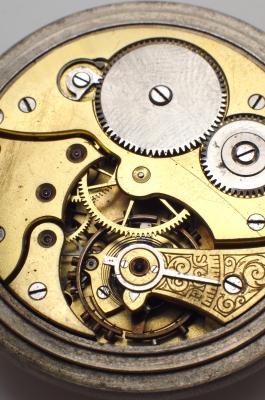Category:
Ambiguity, Uncertainty and Deliberate Obscurity
Ambiguity, Uncertainty and Deliberate Obscurity
Mystery Gadget 2

Answer at this link.
The smudge on the lower portion is where I erased the brand name.
Please note the price, when you go to look.
Posted By: Paul - Mon Aug 22, 2011 -
Comments (12)
Category: Ambiguity, Uncertainty and Deliberate Obscurity, Inventions
Weird Science - Douglas Adams For The Win!

That prevailing view of the universe was thrown, literally, into chaos with the advent of quantum physics, where counter-intuitive results were commonplace, effects could appear to happen before causes (or even without causes) and true randomness abounded. In an effort to return to the saner world of "classical mechanics" many physicists sought to again ascribe the apparent randomness of quantum systems to ignorance, they declared that "hidden variables" currently unknown to science had secretly determined the results. Even Einstein, whose 1905 paper on the photoelectric effect had helped found the new physics was moved to say categorically that "God does not play dice!"
But who was right? In an effort to determine this, in 1964 the physicist John Bell performed a thought experiment whereby pairs of entangled particles (ones where a particular property of the pair is known but each particle's individual contribution is not) are measured simultaneously while a great distance apart from each other. In the classical view either the results would have been determined well in advance of the measurements, in which case they should correlate perfectly, or they are separately determined by the act of measurement, in which case they should not correlate at all. Bell showed with mathematical rigour that in one particular experiment any hidden variable theory should produce a correlation of < 0.5. This became known as the Bell Inequality. At the time there was no practical way to test Bell's hypothesis, and the earliest attempts in 1972 were inconclusive, but by the 1980s the technology had matured to the point that physicists could be very confident that Bell's Inequality had been violated, at its core the quantum universe really was truly and utterly random.
But how random? Consider the quantum equivalent of a coin-toss, one that is completely fair and - as we have discovered - completely random; clearly it is equally likely to end up in only one of two states, the quantum equivalent of "heads" or "tails". We could represent each result with either a 1 or a 0, so the amount of randomness of our quantum coin is said to be "1 bit". But quantum systems are not bound to act like coins, perhaps they are more like dice or roulette wheels, perhaps a quantum system is a random as a lottery draw with literally millions of possible outcomes. It was to answer this question that a team led by S. Pironio of the Laboratoire d’Information Quantique in Brussels set up and ran their own "Bell experiment" and measured with 99% confidence just how random quantum systems are.
So how many bits of outright randomness are created by each quantum interaction? If the title didn't give it away, the answer is...
More in extended >>
Posted By: Dumbfounded - Fri Apr 16, 2010 -
Comments (10)
Category: Ambiguity, Uncertainty and Deliberate Obscurity, Philosophy, Science, Experiments
Follies of the Mad Men #98
Nooka race from ilovedust on Vimeo.
I guess you have to be cool and hip enough to know what this product is before viewing the ad, because you certainly do not learn during the commercial.
Posted By: Paul - Fri Apr 16, 2010 -
Comments (5)
Category: Ambiguity, Uncertainty and Deliberate Obscurity, Business, Advertising, Products

| Who We Are |
|---|
| Alex Boese Alex is the creator and curator of the Museum of Hoaxes. He's also the author of various weird, non-fiction, science-themed books such as Elephants on Acid and Psychedelic Apes. Paul Di Filippo Paul has been paid to put weird ideas into fictional form for over thirty years, in his career as a noted science fiction writer. He has recently begun blogging on many curious topics with three fellow writers at The Inferior 4+1. Contact Us |




